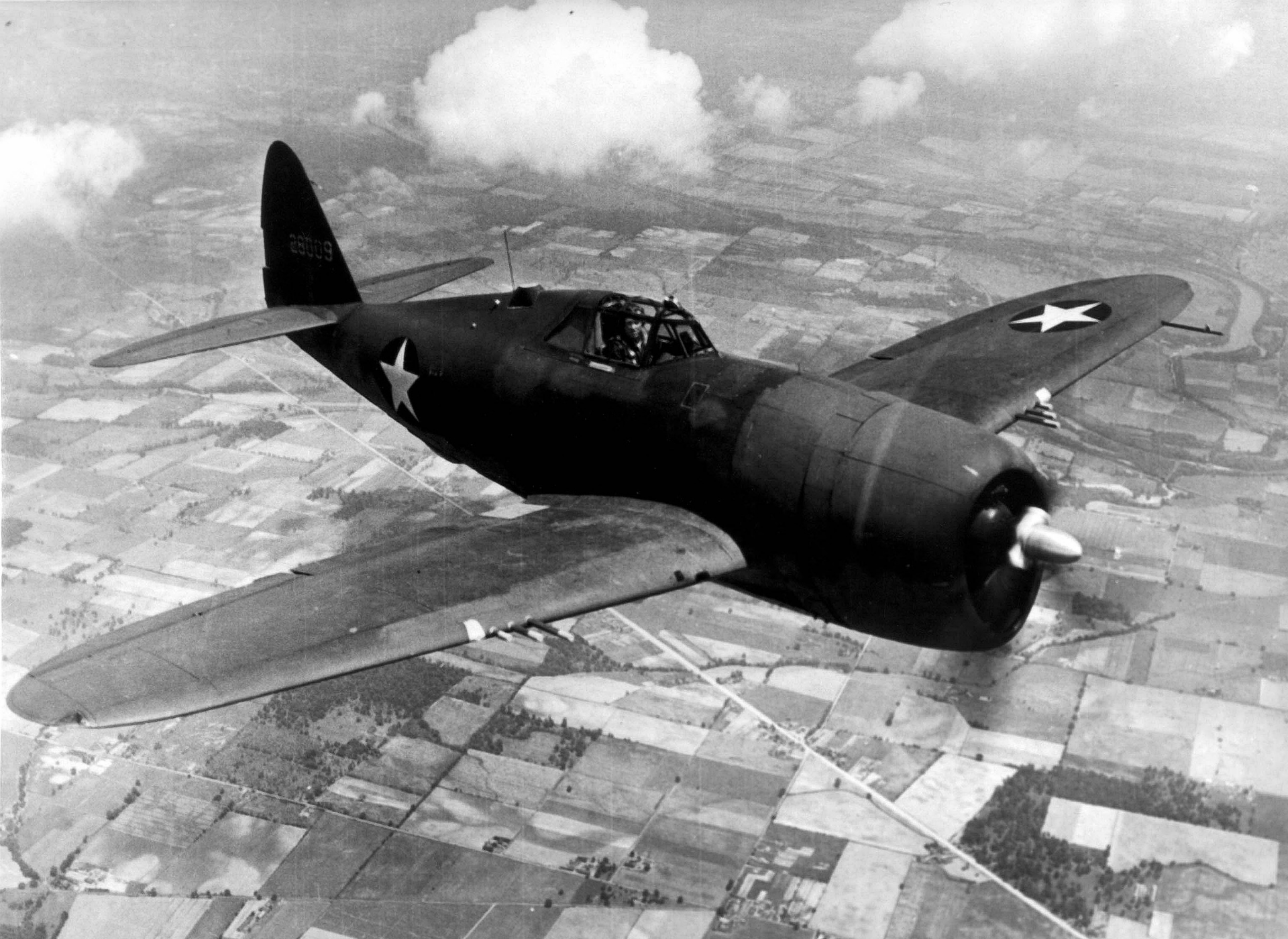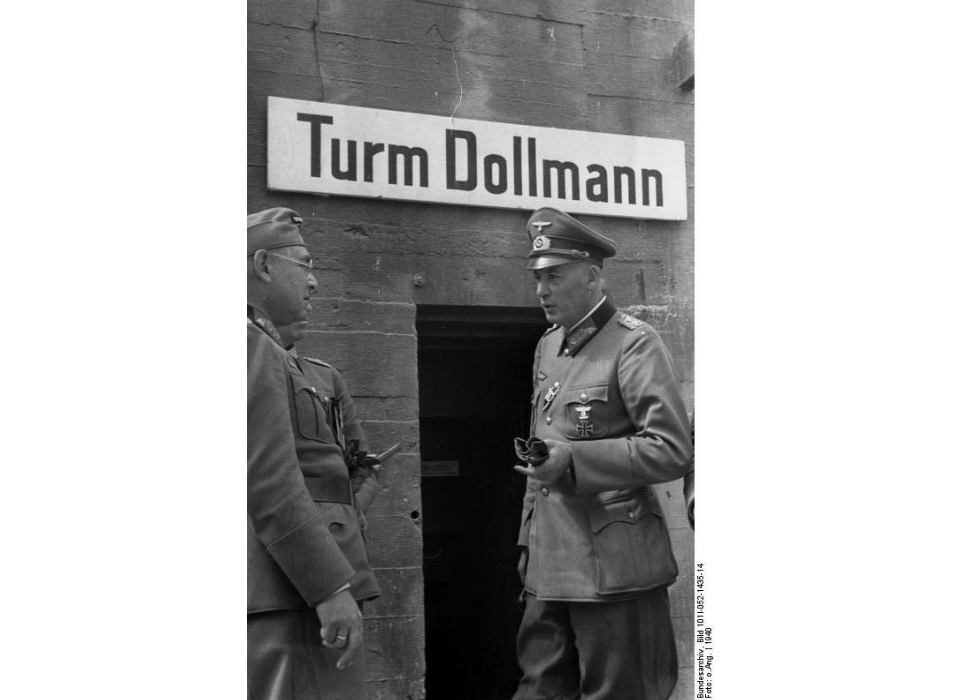Top Image: General Friedrich Dollmann standing before an artillery observation post that bears his name, near the French border. Courtesy of the German Federal Archives.
World War II offered the human race a number of perilous job opportunities: airman on a B-17 over Europe, US Marine in the Pacific, submariner on a U-boat prowling the Atlantic. In all these specialties, life was short, danger ever-present, and mortality high.
Here’s another dangerous job: German general. The Wehrmacht’s field commanders died in droves in this war —223 army generals by one count, an unusual phenomenon in the modern era. German officers, like their Prussian forebears, liked to fight aggressively, generating maximum force at the point of impact. The best way, they all believed, was to lead from the front.
With that in mind, let’s look at one month in this long war. June 1944 saw the Allies landing in Normandy. Although historians remember the early phase of the fighting for its hedgerow-slogging frustration and high losses, the real loser in the campaign was the German officer corps. Consider this list: General Wilhelm Falley of the 91st Air-Landing Division; General Erich Marcks, commander of the LXXXIV Corps; General Fritz Witt of the 12th SS Panzer Division Hitlerjugend; General Heinz Hellmich of the 243rd Division; General Rudolf Stegmann of the 77th Division. These men were all competent, hard-driving unit commanders, schooled in the operational art, trusted by their subordinate officers and men.
They were also all killed in the first two weeks of the Normandy fighting: Falley on D-Day itself—June 6—Marcks on the 12th, Witt on the 14th, Hellmich on the 17th, and Stegmann on the 18th. Allied air attacks killed Marcks, Hellmich, and Stegmann, 20mm shells stitching the latter two. Death at the hands of Allied fighter-bombers became so common German soldiers coined a new term: Jabo-Tod, death by "Jabo," German slang for an Allied fighter-bomber. It wasn’t a small caliber round and it usually wasn’t pretty. Witt’s fate was even grislier: 15-inch gunfire—courtesy of the Royal Navy during a bombardment on his command post at Venoix—obliterated him.

Republic P-47D Thunderbolt, one the planes that brought "Jabo-Tod" on the Germans. Air Force photo.
The dead general toll could easily have gone higher. On June 10, an RAF raid targeted Panzergruppe West’s chateau headquarters in Normandy, badly wounding the commander, General Leo Geyr von Schweppenburg. Some say that Schweppenburg, a neophyte at operating under enemy air superiority, had inadequately camouflaged his headquarters and that a plethora of radio trucks and staff cars outside revealed his position. Geyr’s chief of staff and at least 12 other staff officers died in the attack. And although Geyr survived, his headquarters was out of the fighting for the next two weeks, preventing the Germans from unleashing their Panzer divisions in a counterattack. A few weeks later, on July 17, another Allied air raid caught Field Marshal Rommel’s Horch staff car tearing along the road between Vimoutiers and Livarot, killing the driver and wounding Rommel so grievously that first responders to the wreck thought the field marshal was dead.
June 1944 was also a fateful month on the Eastern Front, featuring the Soviet army’s great offensive in Byelorussia, Operation Bagration. Leading from the front wasn’t the only thing that killed German generals here. The powerful Soviets literally destroyed three German armies—the 3rd Panzer, 4th and 9th Armies—within days. The Red Army’s rapid advance encircled German forces all over the map; many of the dead generals had perished trying to lead breakouts.
The fighting claimed two corps commanders early on, Generals George Pfeiffer (VI Corps) south of Vitebsk and Robert Martinek (XXXIX Panzer Corps) near Mogilev, and took Martinek’s successor, General Otto Schünemann the very next day, along with the corps chief of staff. Division commanders got hit, too, with Generals Robert Pistorius and Rudolf Peschel—commanders of the 4th and 6th Luftwaffe Field Divisions, respectively—dying in the Vitebsk encirclement in June 1944. Sometimes it was just bad luck. In the follow-on Soviet offensive to Bagration, the Lvov Operation of July, Soviet armies encircled General Arthur Hauffe’s XIII Corps in the town of Brody. Hauffe surrendered, but as his Soviet guards frog-marched him into captivity, he stepped on a mine and was blown apart.
There’s no mystery here. The dead German generals had been fighting enemies with more productive war economies and vastly superior logistics. In a war of men against fire, fire usually wins. The death toll was yet another price the Wehrmacht paid for waging global war on a shoestring.
Being a German general: The very thought gives me a heart attack. Which is precisely what happened to the commander of the German 7th Army in Normandy, General Friedrich Dollmann, on June 29, 1944.
This piece appeared originally in the July/August 2016 issue of World War II Magazine.
Robert Citino, PhD
Robert Citino, PhD, is the former Samuel Zemurray Stone Senior Historian in the Jenny Craig Institute for the Study of War and Democracy.
Cite this article:
MLA Citation:
APA Citation:
Chicago Style Citation:





![Max Fuchs, New York City cantor, sings as Rabbi Sydney [sic] Lefkowitz, Richmond, VA, conducts the first Jewish services from Germany.](/sites/default/files/styles/max_650x650/public/2025-10/image1.jpg)



